CONTENTS
1 TABLES
2 FIGURES
3 SCOPE
4 REFERENCES
4.1 Normative references
4.2 Informative references
5 DEFINITIONS AND ABBREVIATIONS
5.1 Abbreviations
6 MODELING
6.1 Reference Model
6.2 Device Model
6.2.1 General
6.2.2 The Object Dictionary
6.3 Communication Model
6.3.1 Master/Slave relationship
6.3.2 Client/Server relationship
6.3.3 Producer/Consumer relationship - Pull/Push model
7 PHYSICAL LAYER
7.1 Transceiver
7.2 Bit rates and timing
8 DATA LINK LAYER
8.1 CAN Frame Type
9 APPLICATION LAYER
9.1 Data Types and Encoding Rules
9.1.1 General Description of Data Types and Encoding Rules
9.1.2 Data Type Definitions
9.1.3 Bit Sequences
9.1.3.1 Definition of Bit Sequences
9.1.3.2 Transfer Syntax for Bit Sequences
9.1.4 Basic Data Types
9.1.4.1 NIL
9.1.4.2 Boolean
9.1.4.3 Void
9.1.4.4 Unsigned Integer
9.1.4.5 Signed Integer
9.1.4.6 Floating-Point Numbers
9.1.5 Compound Data Types
9.1.6 Extended Data Types
9.1.6.1 Octet String
9.1.6.2 Visible String
9.1.6.3 Unicode String
9.1.6.4 Time of Day
9.1.6.5 Time Difference
9.1.6.6 Domain
9.2 Communication Objects
9.2.1 Process Data Object (PDO)
9.2.1.1 Transmission Modes
9.2.1.2 Triggering Modes
9.2.1.3 PDO Services
9.2.1.3.1 Write PDO
9.2.1.3.2 Read PDO
9.2.1.4 PDO Protocol
9.2.1.4.1 Write PDO Protocol
9.2.1.4.2 Read PDO Protocol
9.2.2 Service Data Object (SDO)
9.2.2.1 SDO Services
9.2.2.1.1 SDO Download
9.2.2.1.2 Initiate SDO Download
9.2.2.1.3 Download SDO Segment
9.2.2.1.4 SDO Upload
9.2.2.1.5 Initiate SDO Upload
9.2.2.1.6 Upload SDO Segment
9.2.2.1.7 Abort SDO Transfer
9.2.2.1.8 SDO Block Download
9.2.2.1.9 Initiate SDO Block Download
9.2.2.1.10 Download SDO Block
9.2.2.1.11 End SDO Block Download
9.2.2.1.12 SDO Block Upload
9.2.2.1.13 Initiate SDO Block Upload
9.2.2.1.14 Upload SDO Block
9.2.2.1.15 End SDO Block Upload
9.2.2.2 SDO Protocols
9.2.2.2.1 Download SDO Protocol
9.2.2.2.2 Initiate SDO Download Protocol
9.2.2.2.3 Download SDO Segment Protocol
9.2.2.2.4 Upload SDO Protocol
9.2.2.2.5 Initiate SDO Upload Protocol
9.2.2.2.6 Upload SDO Segment Protocol
9.2.2.2.7 Abort SDO Transfer Protocol
9.2.2.2.8 SDO Block Download Protocol
9.2.2.2.9 Initiate SDO Block Download Protocol
9.2.2.2.10 Download SDO Block Segment Protocol
9.2.2.2.11 End SDO Block Download Protocol
9.2.2.2.12 Upload SDO Block Protocol
9.2.2.2.13 Initiate SDO Block Upload Protocol
9.2.2.2.14 Upload SDO Block Segment Protocol
9.2.2.2.15 End SDO Block Upload Protocol
9.2.2.2.16 CRC calculation algorithm to verify SDO Block Transfer
9.2.3 Synchronisation Object (SYNC)
9.2.3.1 SYNC Services
9.2.3.2 SYNC Protocol
9.2.4 Time Stamp Object (TIME)
9.2.4.1 TIME Services
9.2.4.2 TIME Protocol
9.2.5 Emergency Object (EMCY)
9.2.5.1 Emergency Object Usage
9.2.5.2 Emergency Object Data
9.2.5.3 Emergency Object Services
9.2.5.4 Emergency Object Protocol
9.2.6 Network Management Objects
9.2.6.1 NMT Services
9.2.6.1.1 Module Control Services
9.2.6.1.2 Error Control Services
9.2.6.1.3 Bootup Service
9.2.6.2 NMT Protocols
9.2.6.2.1 Module Control Protocols
9.2.6.2.2 Error Control Protocols
9.2.6.2.3 Bootup Protocol
9.3 Synchronisation of the SYNC Consumer
9.3.1 Transmission of Synchronous PDO Messages
9.3.2 Optional High Resolution Synchronisation Protocol
9.4 Network Initialisation and System Boot-Up
9.4.1 Initialisation Procedure
9.4.2 NMT State Machine
9.4.2.1 Overview
9.4.2.2 States
9.4.2.2.1 Initialisation
9.4.2.2.2 Pre-Operational
9.4.2.2.3 Operational
9.4.2.2.4 Stopped
9.4.2.3 States and Communication Object Relation
9.4.2.4 State Transitions
9.4.3 Pre-Defined Connection Se
9.5 Object Dictionary
9.5.1 General Structure of the Object Dictionary
9.5.2 Dictionary Components
9.5.3 Data Type Entry Specification
9.5.3.1 Organisation of structured Object Dictionary Entries
9.5.4 Specification of Predefined Complex Data Types
9.5.4.1 PDO Communication Paramter Record Specification
9.5.4.2 PDO Mapping Parameter Record Specification
9.5.4.3
9.5.4.4 SDO Parameter Record Specification
9.5.4.5 Identity Record Specification
9.6 Communication Profile Specification
9.6.1 Detailed Object Specification
9.6.2 Overview Object Dictionary Entries for Communication
9.6.3 Detailed Specification of Communication Profile specific Objects
Object 1000h: Device Type
Object 1001h: Error Register
Object 1002h: Manufacturer Status Register
Object 1003h: Pre-defined Error Field
Object 1005h: COB-ID SYNC message
Object 1006h: Communication Cycle Period
Object 1007h: Synchronous Window Length
Object 1008h: Manufacturer Device Name
Object 1009h: Manufacturer Hardware Version
Object 100Ah: Manufacturer Software Version
Object 100Ch: Guard Time
Object 100Dh: Life Time Factor
Object 1010h: Store parameters
Object 1011h: Restore default parameters
Object 1012h: COB-ID Time Stamp Object
Object 1013h: High Resolution Time Stamp
Object 1014h: COB-ID Emergency Object
Object 1015h: Inhibit Time EMCY
Object 1016h: Consumer Heartbeat Time
Object 1017h: Producer Heartbeat Time
Object 1018h: Identity Object
Object 1200h - 127Fh: Server SDO Parameter
Object 1280h - 12FFh: Client SDO Parameter
Object 1400h - 15FFh: Receive PDO Communication Parameter
Object 1600h - 17FFh: Receive PDO Mapping Parameter
Object 1800h - 19FFh: Transmit PDO Communication Parameter
Object 1A00h - 1BFFh: Transmit PDO Mapping Parameter
10 IMPLEMENTATION RECOMMENDATIONS
Invalid COB's
Time-out's
11 Annex A (normative)
Additional functionality for CANopen NMT slaves
11.1 Additional object dictionary entries
11.2 Device configuration
11.2.1 Boot-up configuration process
11.2.2 EDS storage
11.3 OS command and prompt
11.3.1 OS command
11.3.2 OS debugger interface
11.3.3 OS prompt
11.4 Multiplexed PDOs
11.4.1 MPDO Protocol
11.4.1.1 Destination Address Mode (DAM)
11.4.1.2 Source Address Mode (SAM)
11.4.2 Object dictionary entries
11.4.2.1 PDO Mapping Record
11.4.2.2 Object Dispatching List
11.4.2.3 Object Scanner List
11.4.3 Implementing MPDOs
11.4.4 Groups, security and network configuration tools
11.4.5 Indication of MPDO capability in the EDS
11.5 Additional functionality for modular CANopen devices
11.5.1 Background
11.5.2 Modular Devices
11.6 Additional communication objects
11.6.1 Emergency consumer object
11.6.2 Error behaviour object
12 Index
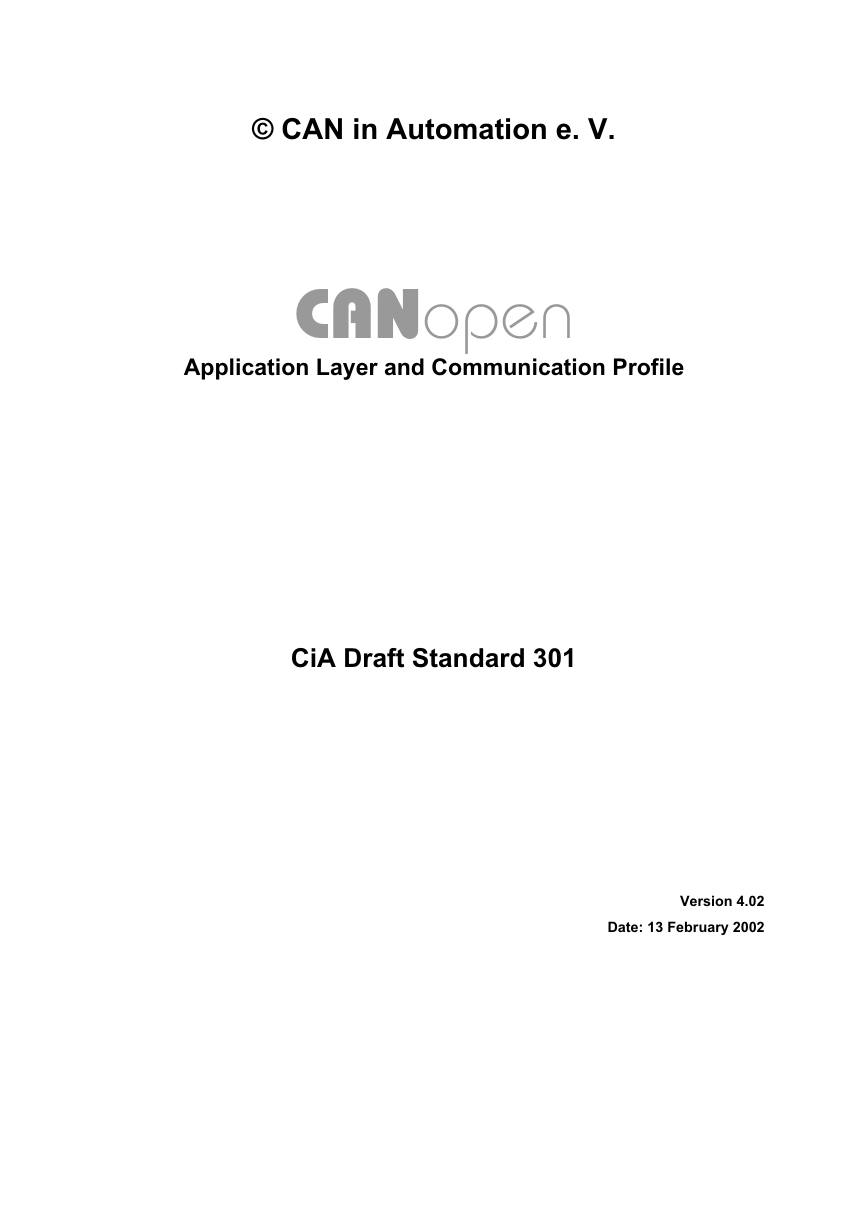
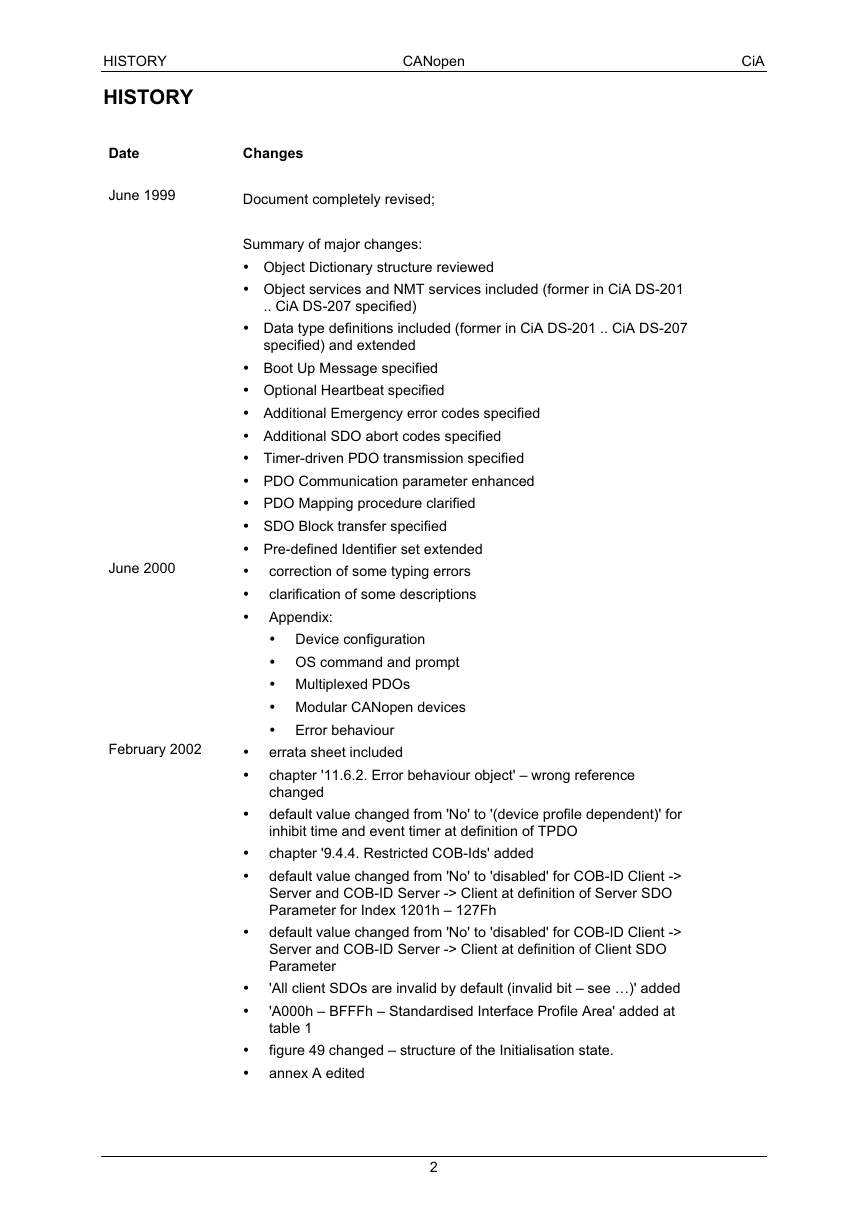
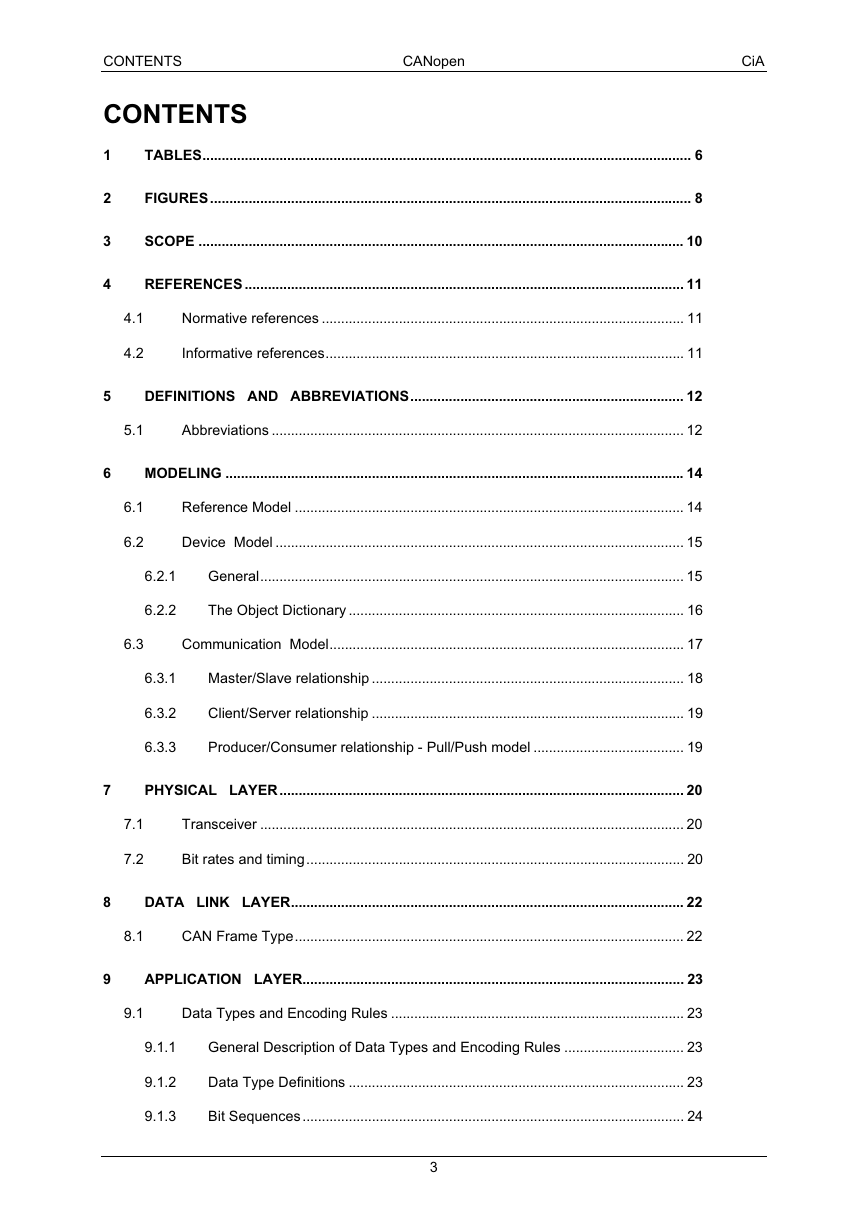
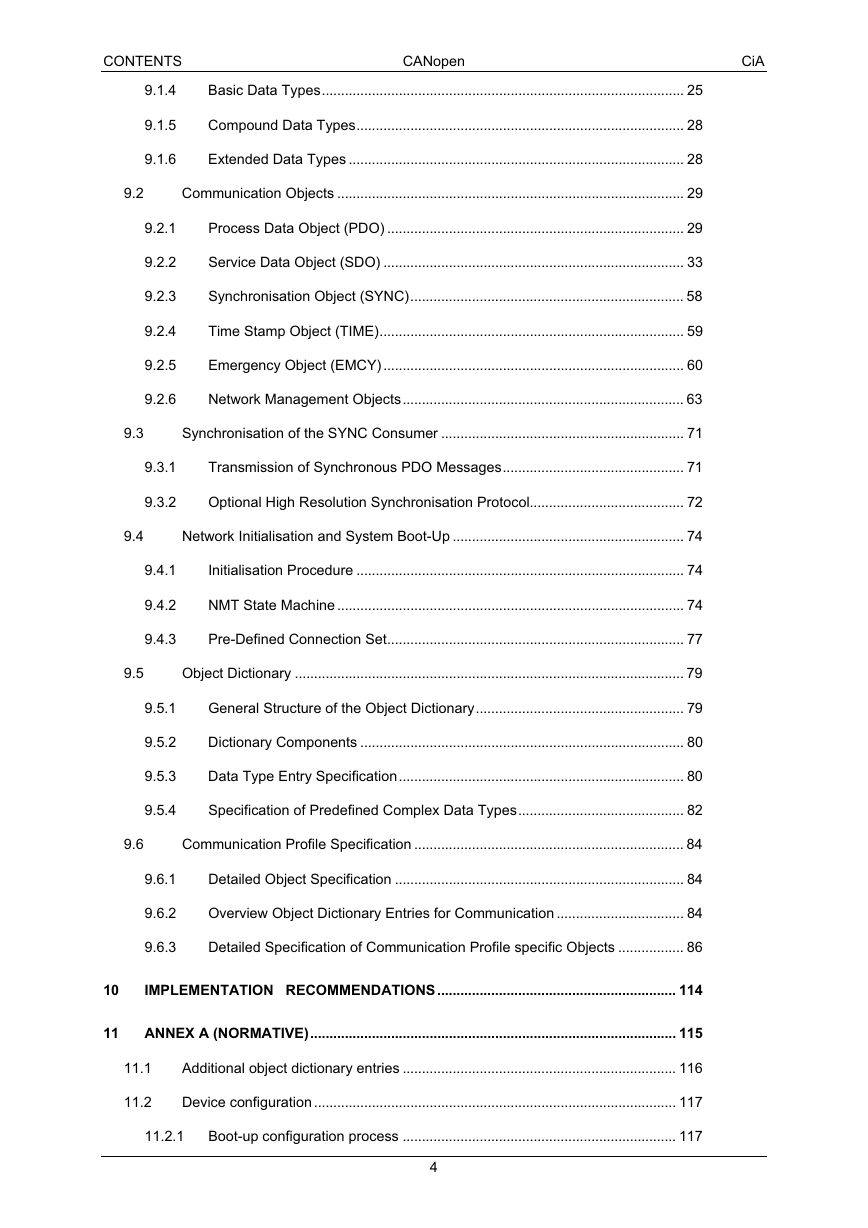

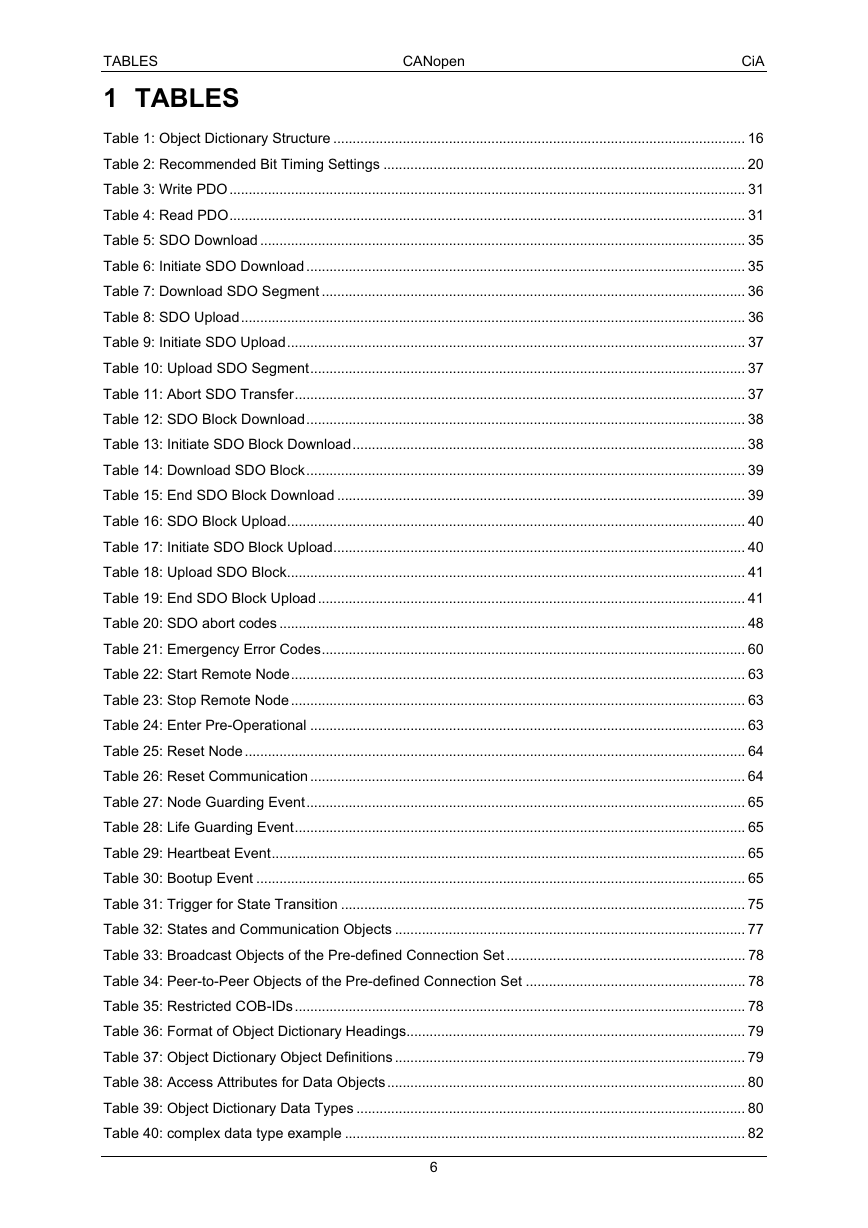
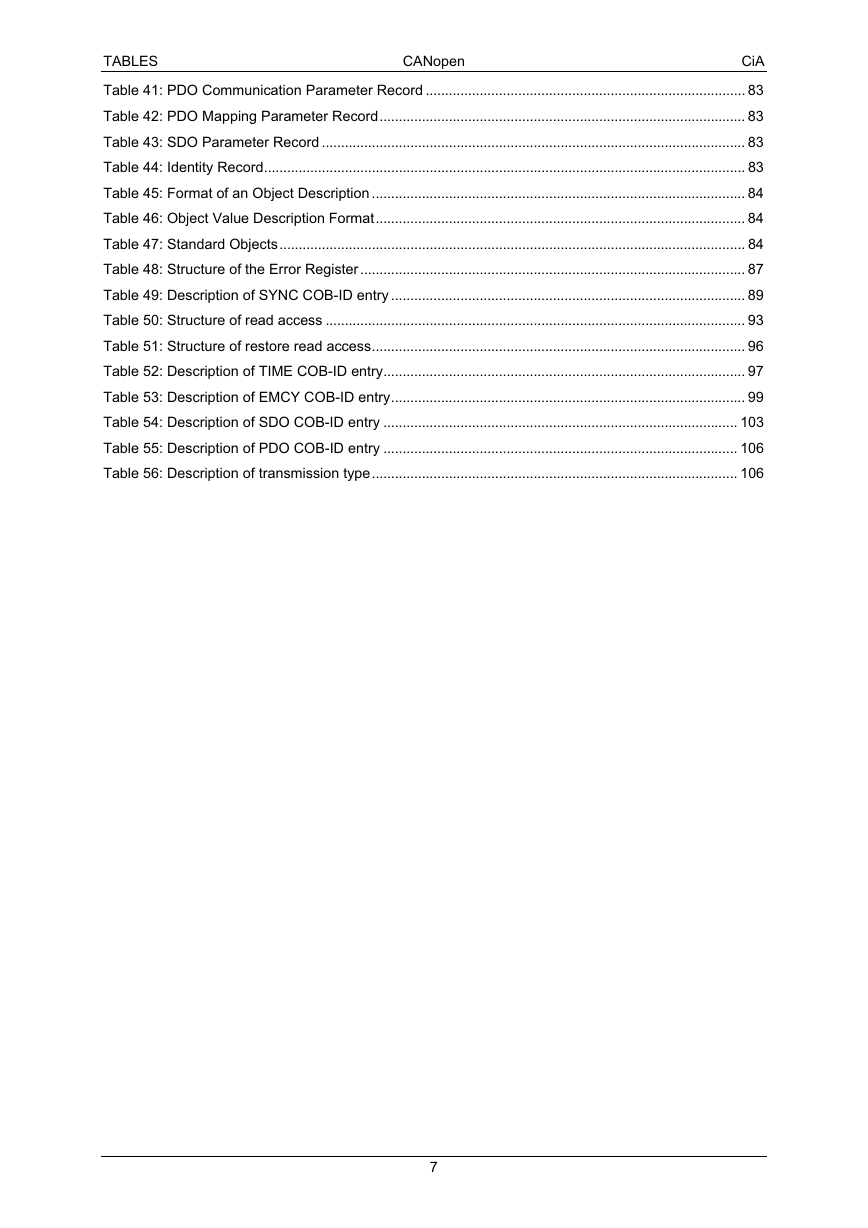
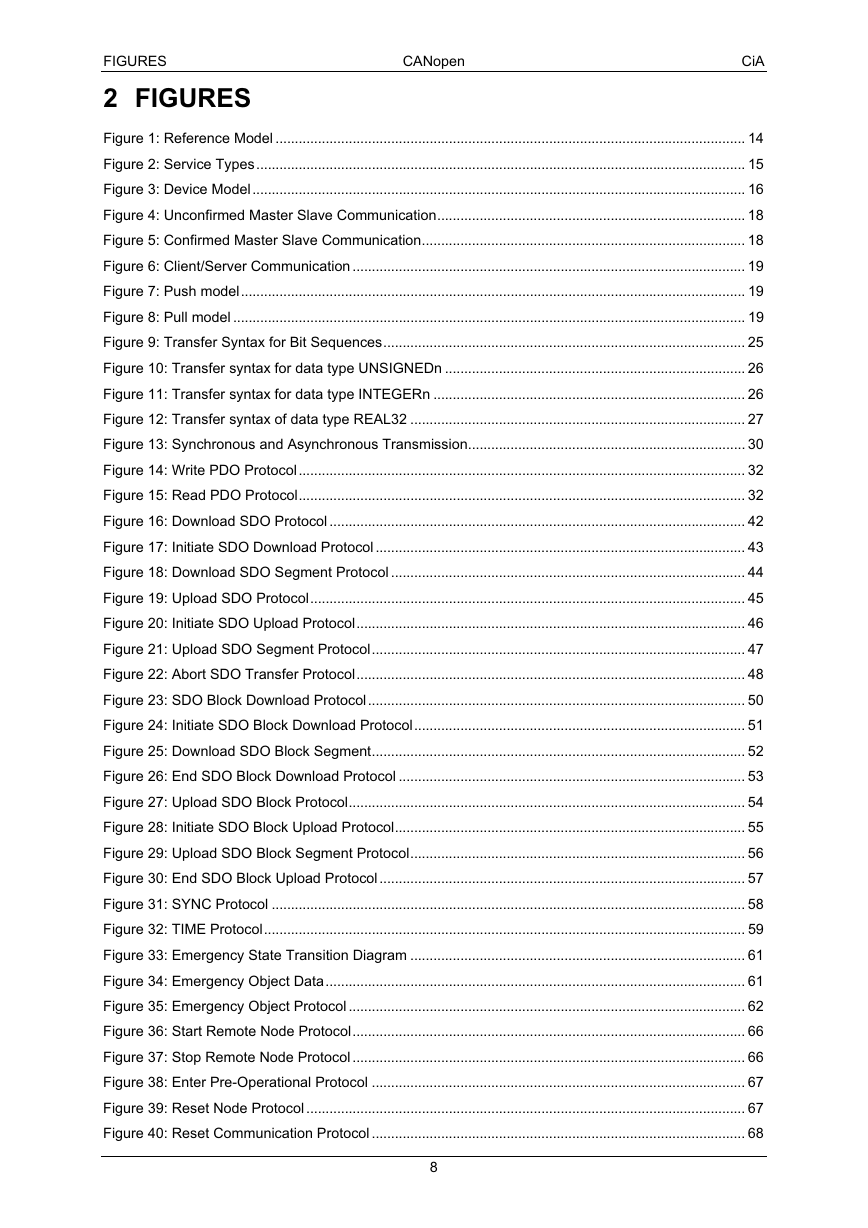








 2023年江西萍乡中考道德与法治真题及答案.doc
2023年江西萍乡中考道德与法治真题及答案.doc 2012年重庆南川中考生物真题及答案.doc
2012年重庆南川中考生物真题及答案.doc 2013年江西师范大学地理学综合及文艺理论基础考研真题.doc
2013年江西师范大学地理学综合及文艺理论基础考研真题.doc 2020年四川甘孜小升初语文真题及答案I卷.doc
2020年四川甘孜小升初语文真题及答案I卷.doc 2020年注册岩土工程师专业基础考试真题及答案.doc
2020年注册岩土工程师专业基础考试真题及答案.doc 2023-2024学年福建省厦门市九年级上学期数学月考试题及答案.doc
2023-2024学年福建省厦门市九年级上学期数学月考试题及答案.doc 2021-2022学年辽宁省沈阳市大东区九年级上学期语文期末试题及答案.doc
2021-2022学年辽宁省沈阳市大东区九年级上学期语文期末试题及答案.doc 2022-2023学年北京东城区初三第一学期物理期末试卷及答案.doc
2022-2023学年北京东城区初三第一学期物理期末试卷及答案.doc 2018上半年江西教师资格初中地理学科知识与教学能力真题及答案.doc
2018上半年江西教师资格初中地理学科知识与教学能力真题及答案.doc 2012年河北国家公务员申论考试真题及答案-省级.doc
2012年河北国家公务员申论考试真题及答案-省级.doc 2020-2021学年江苏省扬州市江都区邵樊片九年级上学期数学第一次质量检测试题及答案.doc
2020-2021学年江苏省扬州市江都区邵樊片九年级上学期数学第一次质量检测试题及答案.doc 2022下半年黑龙江教师资格证中学综合素质真题及答案.doc
2022下半年黑龙江教师资格证中学综合素质真题及答案.doc